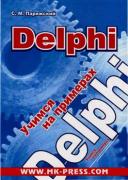Новые книги
cpdf_curveto
| ||||||||||
cpdf_curveto(PHP 3>= 3.0.8, PHP 4) Описаниеvoid cpdf_curveto (int pdf document, float x1, float y1, float x2, float y2, float x3, float y3 [, int mode]) Функция cpdf_curveto() прорисовывает кривую Безье от текущей точки до точки (x3, y3) с использованием (x1, y1) и (x2, y2) в качестве контрольных точек. Необязательный параметр mode определяет единицы измерения. Если он равен 0 или отсутствует, по умолчанию используются единицы, установленные для страницы. Иначе координаты измеряются в пунктах postscript без учёта текущих единиц. См. также cpdf_moveto(), cpdf_rmoveto(), cpdf_rlineto(), cpdf_lineto(). | ||||||||||
| ||||||||||

